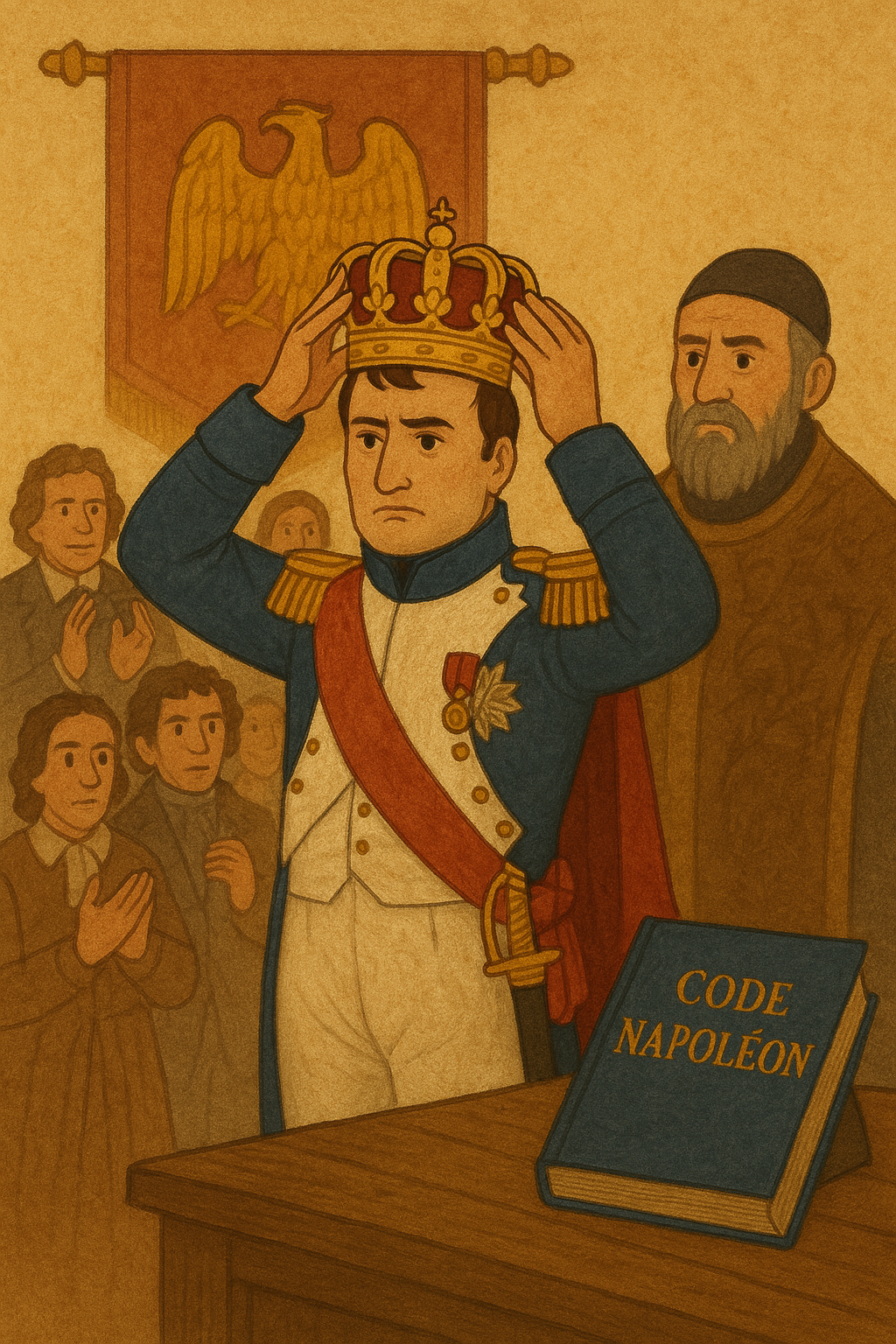Lesson 4: The Spread of Revolutionary Ideals (Enlightenment and Revolution)
👑 The Napoleonic Era: Rise of a Powerful Leader
After the French Revolution, France was full of change and chaos. In 1799, a strong and smart military leader named Napoleon Bonaparte took control of the country. He promised to bring order and power back to France.
📖 Story: Napoleon was once a poor boy from the island of Corsica. But he was great at strategy. He won many battles and became Emperor of France in 1804. He wore a crown, but he placed it on his own head — showing that his power came from himself, not the church!
Napoleon spread Enlightenment ideas across Europe. He gave people new laws called the Napoleonic Code 📘. These laws said that all men were equal under the law and could own land. He also improved schools and roads.
But Napoleon wanted too much power. He started many wars. Other countries became afraid and angry. In 1812, he tried to invade Russia, but it was a disaster — cold, hunger, and fighting killed most of his army. ❄️
In 1815, Napoleon lost the Battle of Waterloo and was sent far away to an island called St. Helena, where he died.
🕊️ The Congress of Vienna: Peace After War
After Napoleon was gone, the leaders of Europe met in 1815 in a city called Vienna, Austria. This meeting was called the Congress of Vienna.
The leaders wanted to bring back peace and order. They put kings back on their thrones and tried to stop more revolutions. They also worked together to keep Europe balanced — so no one country became too powerful again.
📖 Interesting note: The Congress of Vienna kept Europe mostly peaceful for almost 100 years — a long time without big wars between the main powers!
Latin American Independence: A New Fight for Freedom
While Europe was busy with Napoleon, people in Latin America were fighting for their own freedom from European rule — especially from Spain and Portugal.
📖 Story: In Venezuela, a man named Simón Bolívar was called “The Liberator.” He loved Enlightenment ideas and wanted freedom for his people. He led armies across South America and helped free many countries, like Colombia, Venezuela, Ecuador, Peru, and Bolivia.
In Mexico, a priest named Miguel Hidalgo gave a speech called the Grito de Dolores in 1810. He told the people to fight for their rights. This speech started the war for Mexican independence. 🇲🇽
Many Latin American leaders were inspired by the American and French Revolutions. They wanted equality, justice, and independence — and they fought hard to get it.
